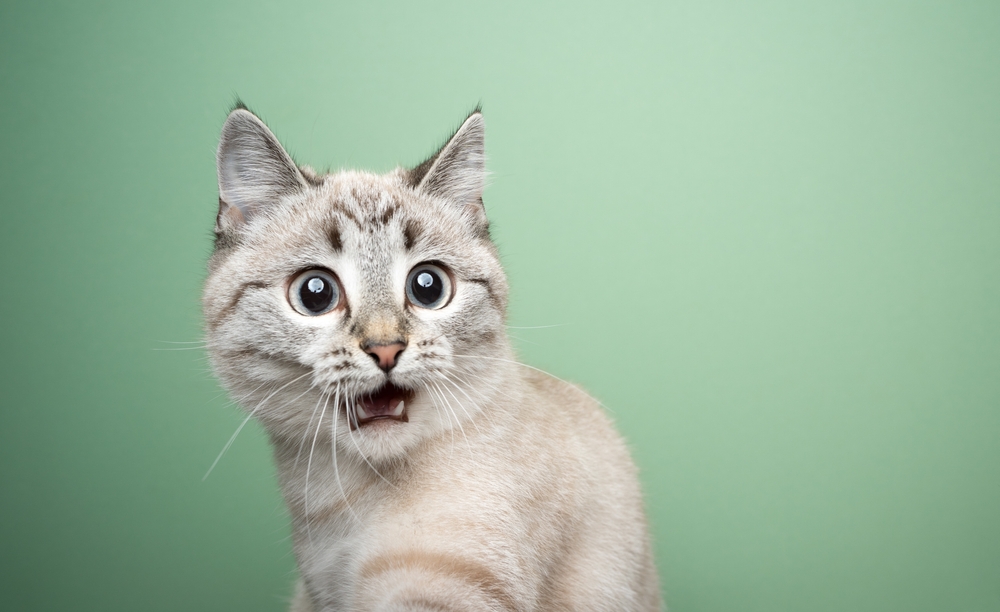Do Cats Have Facial Expressions? Cats May Not Have a Poker Face After All
Posted on Categories Discover Magazine

Our understanding of cats, their behavior, and their ways of communication is still in its infancy. While cat domestication has been around for over 10,000 years, dating all the way back to Ancient Egypt, there is still a lot we don’t know about our feline friends. And the pets seem, at first sight, to have only one facial expression: aloof.
But research is slowly catching up. A recent study carried out by researchers at University of California, Los Angeles (UCLA) has found that when interacting together, cats show a total of 276 unique facial expressions.
Do Cats Have Facial Expressions?
Humans exhibit around 44 unique facial movements, while dogs have 27 movements, but researchers haven’t recorded the total number of unique expressions for both humans and dogs.
To research facial expressions in cats, scientist Lauren Scott accumulated some 194 minutes of video footage and countless notes after spending nearly two months watching and filming 53 shelter cats and their behavior in the non-profit Cat Café Lounge in Los Angeles.
Scott analyzed the footage together with comparative and evolutionary psychologist Brittany Florkiewicz of Lyon College Arkansas. They used a cat expression coding system called CatFACS, and the long hours in the cat café produced astounding results.
Researching How Many Facial Expressions Cats Can Make
In total, cats had about 26 unique facial movements, such as opening their eyes or moving their ears to a certain position. From these 26 movements, generally four expressions at any one time were found to make up a unique expression.
“(Our) findings show it is good to look at a cat’s ears, eyes and whiskers to understand if they are feeling friendly,” Florkiewicz said in an interview with CBC Kids News. “Their mouth provides a lot of information about whether a cat fight is likely. People may think that cats’ facial expressions are all about warning other cats and people off, but this shows just how social and tolerant pet cats can actually be.”
Read More: 10 Things You Have Always Wanted to Know About Cats
How Do Cats Communicate With Humans?
In previous research, cat behavior expert John Bradshaw has also studied cat to human interactions. Bradshaw found that there aren’t many similar behaviors, maybe half a dozen, that cats seem to use towards humans as they use toward other cats, such as rubbing up against them, and kneading.
Other research by Valerie Bennett has found that the components of cats’ facial “configurations” involve ear movements, opening of the eyes, and opening of the mouth, generally associated with vocalizing, when interacting with humans.
According to Bradshaw, cats may see us not necessarily as another species, but rather bigger and more clumsy cats that just happen to pander to all their needs. This suggests that the facial expressions used between cats are probably valid between cats and humans as well.
Read More: How Cats Purr: Understanding Those Adorable, Vibrating Noises
Are Cats Social Animals?
Florkiewicz said in an interview with CBC Kids News that cats seem far from anti-social. From her research, “Almost half, or 45 percent, of the expressions were distinctly affiliative, 37 percent were distinctly non-affiliative and 18 percent of the expressions were a bit of both.”
Whether interacting with their own kind, or with their humans, Florkiewicz said to CBC Kids News, “Chances are the cats are having a good time […] if the ears are going forward and the whiskers are going forward.”
Next time your cat graces you with its presence, have a closer look at the face, whiskers, and ears. While cats may not be able to compete with those doggy eyes, they certainly can express their feelings and needs a lot better than we have given them credit for until now. And they can certainly get your attention a lot more when adding that demanding meow, with which no dog can ever compete.
Read More: How Long Can Cats Be Left Alone? What Is Best for Them?